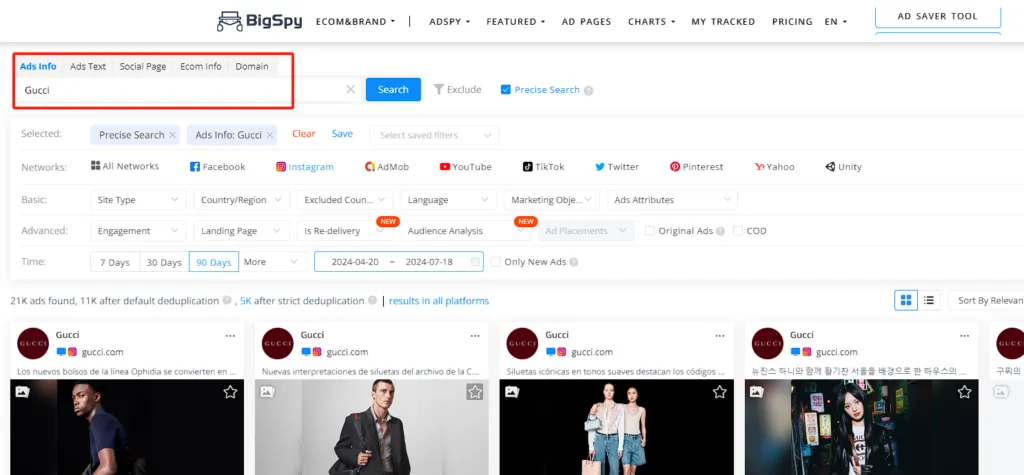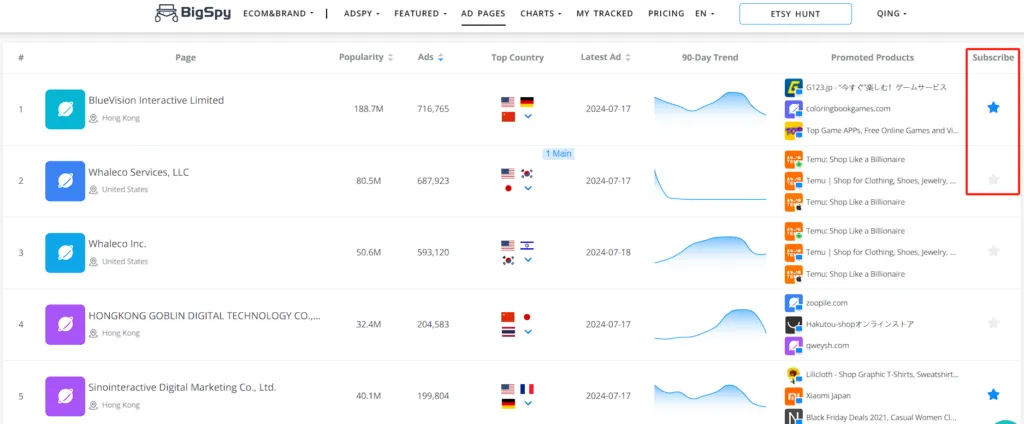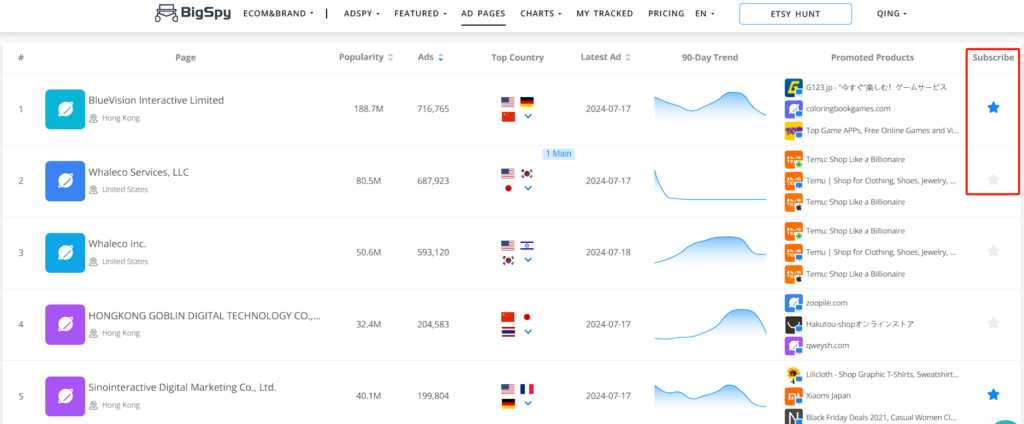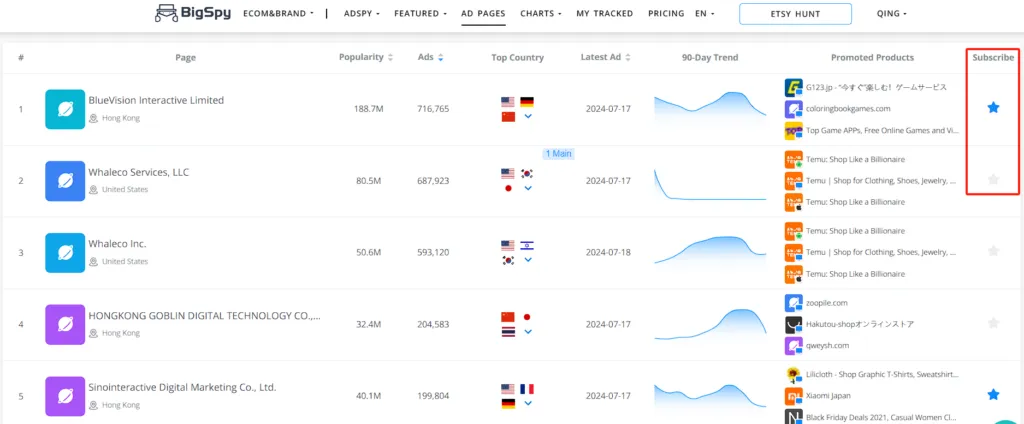We all know that competitive analysis is crucial in marketing, right? However, most people only recognize its importance without understanding why. Today's article will provide evidence to support this argument and clarify why we closely monitor our competitors. Does it really have a significant impact on our marketing efforts?
Reasons to Closely Monitor Competitors
Closely monitoring competitors can indeed have a significant impact on a company's marketing strategy and market performance. From understanding market trends to optimizing products and services, and formulating marketing strategies, competitive analysis provides valuable insights and competitive advantages across various aspects. This isn't just theoretical; numerous studies and real-world data have proven this point.
Understanding Market Trends
Competitive analysis helps companies understand market trends and changes in consumer demand. According to a study by Deloitte, 80% of companies believe competitive intelligence directly impacts their strategic planning.
Identifying Opportunities and Threats
By analyzing competitors, companies can identify market opportunities and potential threats. Gartner's report indicates that 70% of high-performing companies regularly conduct competitive analysis to uncover new market opportunities and mitigate potential threats.
Optimizing Products and Services
McKinsey's research shows that companies can increase their market share by an average of 20% by enhancing product and service quality through competitive analysis. Understanding competitors' product and service features helps companies improve their own offerings and boost market competitiveness.
Formulating Effective Marketing Strategies
Competitive analysis assists companies in crafting more precise and effective marketing strategies. According to a HubSpot survey, 64% of marketers consider competitive analysis a crucial component of marketing strategy development.
Enhancing Customer Satisfaction
By understanding how competitors meet customer needs, companies can improve their customer service, increase customer satisfaction, and boost customer loyalty.
Optimizing Pricing Strategies
Analyzing competitors' pricing strategies allows companies to adjust their own pricing to ensure competitiveness. PwC's research suggests that companies can increase profit margins by 15% through effective competitive analysis.
Driving Innovation and Differentiation
Understanding competitors' innovation and differentiation strategies can inspire a company's own innovation capabilities and help create a unique market position. BCG's research indicates that companies can achieve up to a 30% revenue increase through innovation driven by competitive analysis.
Case Studies
Apple vs. Samsung
The competition between Apple and Samsung in the smartphone market is a classic case. Apple and Samsung are two giants in the global smartphone market, competing for market share over the long term. In the early 2010s, Samsung captured a wide market space by launching numerous different models of smartphones, while Apple released only one or two iPhone models per year. Apple realized that while it held an advantage in the high-end market, it faced significant competition in the mid to low-end market. By deeply analyzing Samsung's product strategy, market feedback, and consumer preferences, Apple decided to introduce competitive products in the mid-range market, such as the iPhone SE, while maintaining its high-end product positioning. Apple also noticed that Samsung emphasized innovation and diversity in its marketing, so Apple began to highlight the advantages of its ecosystem and the unique user experience in its iPhone advertisements. Through these strategic adjustments, Apple not only solidified its position in the high-end market but also successfully entered the mid-range market, expanding its user base. Additionally, Apple's marketing strategy deepened its brand image and increased customer loyalty. As a result, Apple's market share and profit margins significantly improved.
Coca-Cola vs. Pepsi
In the 1980s, Coca-Cola introduced "New Coke" in an attempt to attract more consumers by changing the formula. However, this decision sparked massive consumer backlash, and sales plummeted. PepsiCo keenly observed this market shift and launched a series of advertising campaigns, such as the "Pepsi Challenge," emphasizing its taste advantage and ramping up market promotion, directly contrasting Coca-Cola's failed attempt. These campaigns capitalized on consumer dissatisfaction with New Coke, further strengthening Pepsi's brand recognition. During this period, Pepsi's market share significantly increased, while Coca-Cola had to quickly revert to its original formula to regain consumer trust. Through this competition, Pepsi not only gained a short-term market advantage but also enhanced its brand image and consumer loyalty.
What Can We Gain from Analyzing Competitors' Advertisements?
Analyzing competitors' advertisements can provide valuable data and insights that help businesses optimize their advertising strategies and enhance marketing effectiveness. Here are some specific results and data that can be obtained:
Advertising Creativity and Content Trends
- Discover Creative Types: Understanding the creative elements used in competitors' ads (such as visual style, copywriting, color schemes, etc.) helps businesses identify the types of creativity that are popular in the market.
- Content Themes: Identifying common themes and storylines in competitors' ads helps understand which themes resonate most with the target audience.
Audience Targeting and Segmentation
- Audience Characteristics: Analyzing the target audience of competitors' ads reveals characteristics such as age, gender, geographic location, and interests.
- Market Segmentation: Identifying how competitors perform in different market segments helps uncover market opportunities that are not fully exploited.
Advertising Channels and Budget Allocation
- Advertising Platforms: Understanding the main advertising platforms used by competitors (e.g., Facebook, Instagram, Google Ads) helps businesses optimize their own channel selection.
- Budget Allocation: Analyzing competitors' ad spending on different channels provides insights into their budget allocation strategies, allowing businesses to develop more competitive budget plans.
Advertising Performance and Effectiveness
- Click-Through and Conversion Rates: Using third-party tools or platforms (such as Pipiads, and BigSpy) to analyze competitors' click-through rates, conversion rates, and other key metrics helps gauge the effectiveness of their ads.
- User Interaction: Observing user comments, likes, shares, and other interaction data on competitors' ads helps assess user engagement and ad popularity.
Advertising Frequency and Timing
- Ad Frequency: Understanding the frequency and cycle of competitors' ad placements helps businesses optimize their own advertising schedules to avoid ad fatigue.
- Timing: Analyzing the timing of competitors' ad placements helps identify the best times to launch ads for maximum exposure and effectiveness.
Brand Positioning and Value Proposition
- Brand Messaging: Analyzing the brand messages and value propositions conveyed in competitors' ads helps understand their brand positioning and market strategies.
- Differentiation Advantages: Identifying the differentiation advantages emphasized in competitors' ads helps businesses find their unique selling points and market positioning.
Using BigSpy to Spy Competitors' Instagram Ads
BigSpy has become the top choice for discerning users due to its unique combination of advanced features, user-friendly interface, and unparalleled reliability, making advertising more transparent.
Unlike other ordinary spy applications, BigSpy boasts a wealth of advanced features that enhance your ad spying experience. From in-depth message tracking to multimedia monitoring, this tool goes beyond basic functionality, providing a comprehensive toolkit for digital detectives and curious individuals. The streamlined, user-friendly interface ensures a seamless and intuitive experience. Whether you're a seasoned investigator or a first-time user, navigating this tool is effortless, making it accessible to users of all technical levels.
Now, let me guide you step-by-step on how to use BigSpy to monitor competitors' Instagram ads:
1. Identify Your Competitors
To conduct a comprehensive Instagram competitive analysis, you first need to identify your competitors. Determine your target industry and niche, then search using relevant keywords on Instagram. Once you have a list of your main competitors, you can categorize them into the following types:
- Direct Competitors: Businesses offering similar products or services in your target market.
- Indirect Competitors: Accounts providing products or services that may attract your target audience or operate within your industry but don’t directly compete with you.
2. Perform Search and Analysis in BigSpy
Search for all ads your competitors have placed on Instagram using BigSpy and conduct a thorough analysis of these ads to gather useful information for optimizing your own ads.
Search by Keyword Categories: Enter keywords in the search bar categorized by Ads Info, Ads Text, Social Page, Ecom Info, and Domain. Make sure to use the filters below to select the channel, country/region, ad placement time, and other criteria to maximize your search efficiency.

Analyze Desired Ads: Click on the ads you want to analyze to enter the details page. This page shows the ad creative content (images, videos, and text) and data (including exposure, placement countries, etc.). Analyze ads with high interaction data for timing, text, CTA strategies, creative forms, audience, and other metrics to find commonalities or overlooked aspects for optimizing your ad strategy.


Track Competitors: On the Domain page, you can choose to bookmark and track the competitor, viewing their Advertising Trend, AD Distribution, and all Creatives Insight data.

3. Analyze and Organize the Data
Analyze and organize the obtained data according to your marketing goals to optimize your marketing strategy.
How to Optimize My Marketing Ads Using Analyzed Data? - Marketing Practices
Let's specifically demonstrate the detailed data and results that can be obtained after analyzing competitors' ads and how these analyses can influence and optimize a company's advertising strategy.
Nike vs. Adidas Analysis Process
1. Analysis process
By analyzing the advertising activities of Nike and Adidas, we can gain the following specific data and insights:
- Advertising Creativity and Content Trends:
- Nike: Analysis found that Nike often uses motivational copy and visuals in its ads, emphasizing the "Just Do It" spirit, especially during major sports events.
- Adidas: Adidas ads focus more on storytelling and authenticity, enhancing brand credibility and emotional connection by showcasing real athletes' stories.
2. Data and Results Obtained
- Creative Types: Nike's motivational ad creatives perform exceptionally well among young people aged 18-34, with a 15% increase in click-through rates. Adidas' storytelling ads saw a 10% increase in engagement among consumers aged 25-44.
- Content Themes: The themes of personal breakthrough and perseverance are most popular in Nike's ads, while Adidas achieves high user engagement by showcasing diversity and inclusivity.
3. How It Influences Strategy?
- Optimize Creativity: Companies can draw inspiration from the successful creatives of Nike and Adidas, combining their own brand characteristics to develop more attractive ad content.
- Adjust Content: Based on analysis results, companies can choose ad themes that better suit their target audience, improving ad effectiveness.
Netflix vs. Hulu Analysis Process
1. Analysis process
By analyzing the advertising activities of Netflix and Hulu, we can gain the following specific data and insights:
- Advertising Channels and Budget Allocation:
- Netflix: Mainly advertises on social media and streaming platforms, particularly on TikTok and Instagram.
- Hulu: Focuses more on traditional TV and video websites for its ad placements, using big data for precise targeting.
2. Data and Results Obtained
- Ad Placement Platforms: Netflix's ad interaction rate on TikTok reaches 12%, while Hulu's ad view rate on YouTube reaches 85%.
- Budget Allocation: Netflix spends 60% of its total ad budget on social media, while Hulu spends 50% of its total budget on traditional media.
3. How It Influences Strategy?
- Optimize Channels: Companies can optimize their ad channel selection based on the effectiveness data of the placement platforms, allocating more budget to high-performance platforms.
- Adjust Budget: By analyzing competitors' budget allocations, companies can distribute their ad budgets more rationally, improving ROI.













